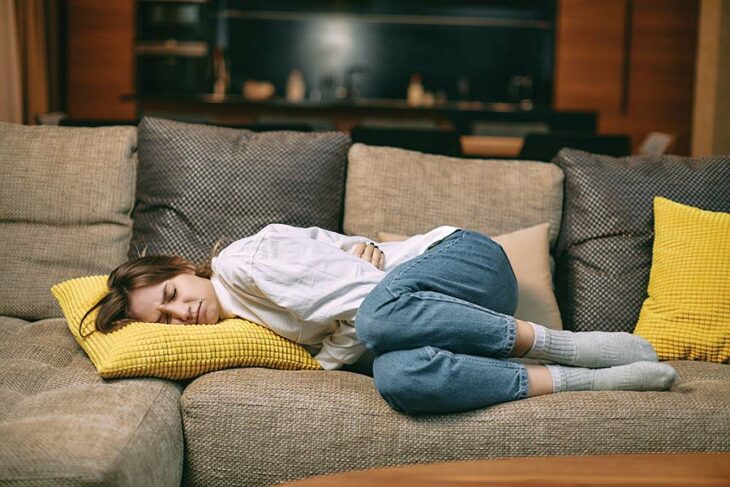Menarche, the onset of menstruation, typically begins between the ages of 10 and 16, sometimes as young as 8. While it’s a sign of becoming an adult, for many women, this milestone marks the start of a 30-plus-year journey of monthly pains. While usually centered in the mid-to-lower pelvis, the pain may be felt in the stomach, lower back, groin or upper thighs.
In a recent national survey, more than four out of five women reported menstrual pain, with two out of five reporting pain with every period. Some women compare the intensity of their cramps to a heart attack. One said it felt like being punched in the gut from the inside out.
As women age, cramps become more common, with women over 30 the most affected. After age 40, many women’s periods become heavier and more painful. While this may be a physiological reaction to aging, it also may stem from other causes and should be evaluated by a physician.
A litany of medical conditions can cause period pain, and one of the most common is endometriosis. For those with this condition, cells being shed from the uterine lining during menstruation flow backwards and out the fallopian tubes, implanting inside the woman’s pelvis. Once settled, they imitate the uterus, causing bleeding internally with each cycle. This internal blood causes pain and can set up further implants.
A second common cause of menstrual cramps are fibroids. Uterine fibroids are non-cancerous tumors that develop from the muscle of the uterus. Tiny ones are common and often go undetected while bigger ones may cause menstrual cramping, heavy bleeding and infertility. Sometimes if childbearing is desired, a large fibroid can be excised. However, in most cases, doctors recommend a hysterectomy. Many other medical issues can cause pelvic pain, such as ovarian cysts or infections, although these usually aren’t associated with monthly cramping.
Some women find adequate relief from their menstrual cramps with simple home treatments, such as heating pads or chamomile tea. Light exercises such as yoga, stretching and walking can stimulate endorphins that lower pain response. Other homeopathic remedies include stress reduction such as with massage, singing and vitamin and mineral supplements. Acupuncture also has been used for relief.
Medications that may help include non-steroidal anti-inflammatory pills like ibuprofen and herbal remedies like fennel, turmeric, cinnamon, ginger, garlic and CBD. Berries, tomatoes, pineapples, leafy green vegetables, almonds, walnuts and fatty fish like salmon also can also help reduce inflammation. In contrast, caffeine and smoking can narrow blood vessel flow, causing increased cramping.
If cramps are worsening with heavy bleeding, a physician can do tests to determine if there’s a physical issue to treat. Standard workups include a pelvic exam, ultrasound and sometimes advanced radiographic studies such as CAT scans and MRIs. Laparoscopic evaluation can be both diagnostic and therapeutic, such as removing fibroids or endometrial implants.
Because menstrual cycles are hormonally induced, regulating with estrogens and progesterone often can be effective in controlling the intensity of both the bleeding and the severity of the pain. Many women find relief from birth control pills, implants or vaginal rings.
Severe menstrual cramps can be disabling. Consult your physician for an appropriate workup. While menopause will bring an end to menstrual cramps, for women whose pain is too severe or who have associated medical causes, sometimes a hysterectomy may be needed.



